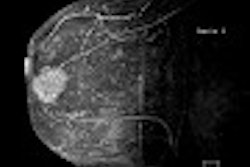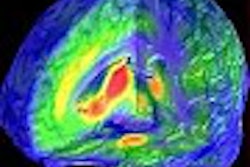CHICAGO - The use of a routine chest x-ray (CXR) does not help evaluate poorly functioning thoracic epidural catheters after a thoracotomy, according to a study presented Friday at the American Pain Society meeting.
Researchers from the University of Virginia Health Systems in Charlottesville reported that routine postoperative chest x-rays are often of limited quality and that catheter tip location is difficult to identify on most films.
"This limits the usefulness of a portable CXR in evaluating marginally functioning epidural catheters," said presenter Dr. Robin Hamill-Ruth, director of the university’s Pain Management Center. Her co-authors are with the departments of nursing, radiology, and surgery.
The results are based on a review of acute pain service records for 50 sequential thoracotomy patients, with thoracic epidural analgesia, during a recent three-month period.
"While epidural analgesia can improve post-operative pain control in thoracotomy patients, pain control is sometimes inadequate," pointed out Hamill-Ruth, who also is an associate professor of anesthesiology and critical care. "The location of the tip of the epidural catheter can affect the distribution of medication. In fact, migration of the tip out of the spinal canal -- leading to patchy spread and spread through the intervertebral foramina -- have been documented. This can cause poor pain control."
The investigators hypothesized that when using an Arrow catheter for epidural analgesia after thoracotomy, the routine postoperative chest x-ray might identify the location of the tip, thus aiding in the evaluation and management of poorly functioning catheters as defined by high visual analogue scale (VAS) scores.
The review examined demographic data, the site of catheter placement, drug mixture and rate of infusion, and VAS scores in the post-anesthesia care unit (PACU) or recovery room on the day after the operation.
Epidurals were placed in a seated position, using a loss-of-resistance technique prior to surgery. Test doses were used to exclude the potential for intravascular and intrathecal placements. Infusions of bupivacaine with hydromorphone were started in the operating room roughly one hour before the end of the case.
The post-operative chest x-rays obtained were reviewed by a blinded radiologist, who assessed image quality (adequate or poor), level of catheter entry, position of catheter tip, and pattern of catheter track in the epidural space.
Forty-four patients had adequate data for inclusion in the analysis. Overall, 78% of the catheters were placed between T7 and T10 according to the anesthesia record, Hamill-Ruth said. However, only 21 catheter tips could be identified on x-ray. Of those, 42.8% had tips between the top of T6 and bottom of T8. This group was half as likely to require breakthrough opiates as the groups with higher or lower tips. Notably, the anesthesiologist’s clinical assessment of level of insertion was, on average, 2.2 levels different from the radiologist’s level.
Fifty-four percent of patients received bupivicaine (0.0625%) with 9 ug hydromorphone/cc; 46% received bupivacaine (0.125%) with 6 ug hydromorphone/cc. On the first postoperative day, 59% of patients reported VAS with movement less than or equal to 3. There was no correlation between the infusion mix and VAS.
The quality of postoperative chest x-rays was rated as poor 30% of the time. When catheters could be located on the x-rays, the tip could not be clearly identified on the radiographs.
Hamill-Ruth concluded that the results suggest that a routine portable chest x-ray is rarely worthwhile. She added that better visualization might be achieved through the injection of contrast and/or the use of radiographs focused on the thoracic spine. The placement of a metal marker at the site of catheter entry might help identify a catheter that is subtly visible amid the spine and cardiac shadows, she said.
By Jill SteinAuntMinnie.com contributing writer
March 24, 2003
Related Reading
Subtle pulmonary nodules on chest x-ray more often missed in upper lobes, February 19, 2003
PET scan can prevent unnecessary lung cancer surgery, April 22, 2002,
Thoracic Imaging: Staging and its Effect on Treatment and Prognosis, April 3, 2002
Copyright © 2003 AuntMinnie.com



















